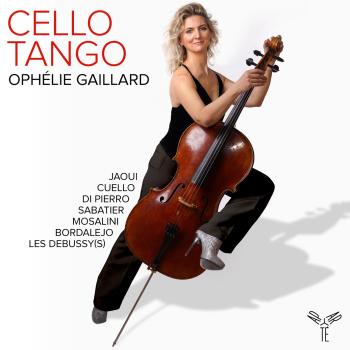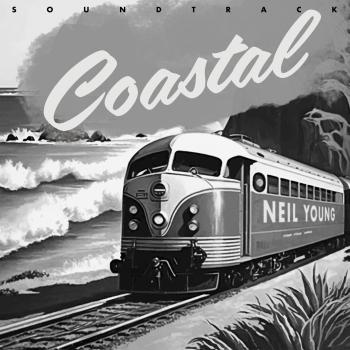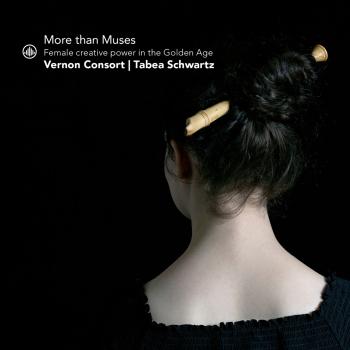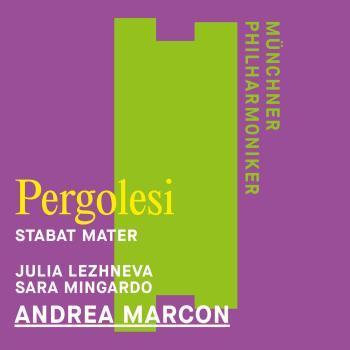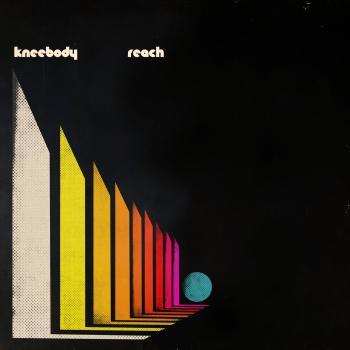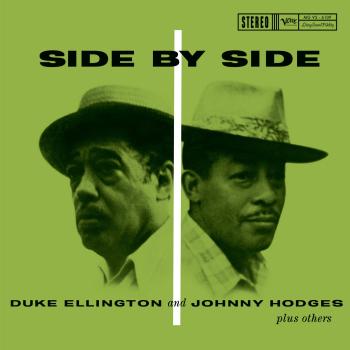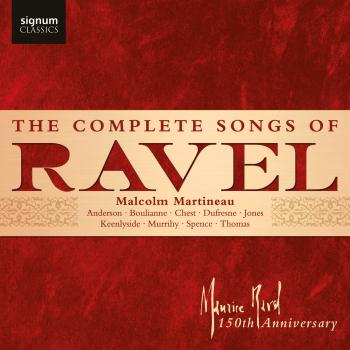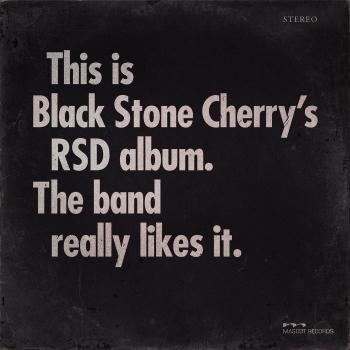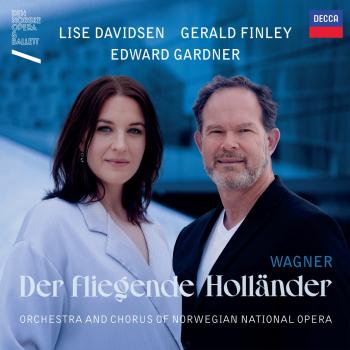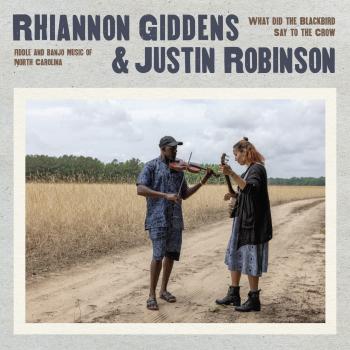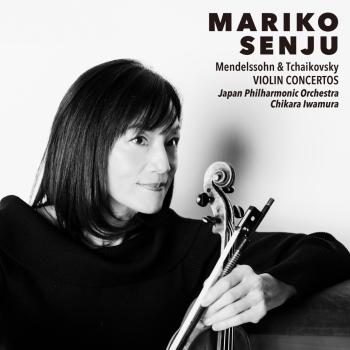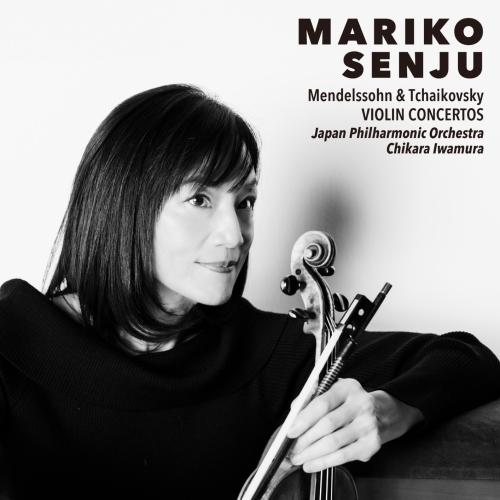
Mendelssohn & Tchaikovsky: Violin Concertos Mariko Senju, Japan Philharmonic Orchestra & Chikara Iwamura
Album Info
Album Veröffentlichung:
2025
HRA-Veröffentlichung:
26.03.2025
Label: UNIVERSAL MUSIC LLC
Genre: Classical
Subgenre: Concertos
Interpret: Mariko Senju, Japan Philharmonic Orchestra & Chikara Iwamura
Komponist: Felix Mendelssohn Bartholdy (1809-1847), Peter Ilyich Tchaikovsky (1840-1893)
Das Album enthält Albumcover
Entschuldigen Sie bitte!
Sehr geehrter HIGHRESAUDIO Besucher,
leider kann das Album zurzeit aufgrund von Länder- und Lizenzbeschränkungen nicht gekauft werden oder uns liegt der offizielle Veröffentlichungstermin für Ihr Land noch nicht vor. Wir aktualisieren unsere Veröffentlichungstermine ein- bis zweimal die Woche. Bitte schauen Sie ab und zu mal wieder rein.
Wir empfehlen Ihnen das Album auf Ihre Merkliste zu setzen.
Wir bedanken uns für Ihr Verständnis und Ihre Geduld.
Ihr, HIGHRESAUDIO
- Felix Mendelssohn (1809 - 1847): Violin Concerto in E Minor, Op. 64:
- 1 Mendelssohn: Violin Concerto in E Minor, Op. 64: I. Allegro molto appassionato 13:53
- 2 Mendelssohn: Violin Concerto in E Minor, Op. 64: II. Andante 07:59
- 3 Mendelssohn: Violin Concerto in E Minor, Op. 64: III. Allegretto non troppo – Allegro molto vivace 07:24
- Pyotr Ilyich Tchaikovsky (1840 - 1893): Violin Concerto in D Major, Op. 35:
- 4 Tchaikovsky: Violin Concerto in D Major, Op. 35: I. Allegro moderato 19:17
- 5 Tchaikovsky: Violin Concerto in D Major, Op. 35: II. Canzonetta. Andante 06:27
- 6 Tchaikovsky: Violin Concerto in D Major, Op. 35: III. Finale. Allegro vivacissimo 11:05
Info zu Mendelssohn & Tchaikovsky: Violin Concertos
Die Geigerin Mariko Senju feiert 2025 den 50. Jahrestag ihres Debüts. Dies ist ihre erste Aufnahme mit ihrer geliebten Stradivari „Duranti“ seit 2002. Diese lang erwartete neue Konzertaufnahme fängt Mariko Senjus „Jetzt“ ein, die zu ihrem 50. Jubiläum sagt: „Der Klang, den ich jetzt spiele, verkörpert alles, was ich in den letzten 50 Jahren gemacht habe.“
Mariko Senju, Violine
Japan Philharmonic Orchestra
Iwamura Chikara, Dirigent
Mariko Senju
started to play violin at the age of 2 years and 3 months olds with Saburou Sumi, Yuko Oku, and Yasurou Sumi. At age 11 she continued to study with Toshiya Eto.
In 1972, Mariko received the second prize at the All Nippon Student Music Competition, Elementary Division, and won the first prize in 1973.
In 1975, at the age of 12 Mariko Senju made her professional debut at the “Wakai Me no Concert: Vol.1” with the NHK Symphony Orchestra. Her schedule kept her busy as she performed regularly in the television program series “Orchestra Ga Yattekita” (TBS) and traveled around as a soloist to perform with orchestras.
At the age of 15, Mariko was the youngest to ever win the first prize at the 46th Japan Music Competition (1977) and received the Leucadia award.
She was also, the youngest to ever win at the 26th Paganini Violin Competition in 1979. Mariko was also recognized when she played for Osamu Tezuka’s well known animation movie “Hi no Tori 2772”.
In 1984, Mariko Senju performed at Isao Tomita’s “Mind of Universe”, an open-air event that took place next to a river at Danube Park, in Linz, Austria. An audience of approximately 80,000 people gathered for the event. Some artists played from inside a helicopter while others played on a boat. It was called “Close Encounters of the Third Kind.” The event was televised through out the world and took a great reaction.
In 1986, she performed at the “Back to the Earth” event in New York. The stage was set in and above the Hudson River. 100,000 people were fascinated with the interplay of sound, lights and water. After graduating from Keio University in 1985 as a philosophy major, Mariko was discovered by conductor Giuseppe Sinopoli. She debuted in 1987 with the Philharmonia Orchestra in London and at the Santa Chiara Music School Philharmonic Orchestra concert in Rome in 1988.
Mariko had an exclusive contract with Victor and released about an album per a year. She was recognized for her great ability and received many awards.
From 1986-1988, Mariko Senju hosted the TV news program, “Sekai Wa Ima”, with Hisanori Isomura on NHK. In 1990, to commemorate the 15th anniversary of her debut, she produced and performed her own recitals. She played “Ysaye: Six Violin Sonatas”, “Bach: All Partita and Sonatas”, “Paganini: 24 Caprices”, and “Mozart: All Violin Concerto” in one night. She performed in many cities in Japan as well as London and Prague. Seeking international peace, she played at the cultural ambassador concert sponsored by Japan Foundation and held in Brazil, Chile and Uruguay. In 1998, she continued to take part in the concerts held in Uzbekistan, Kirghiz and Kazakhstan. For her 20th anniversary of her debut she volunteered to perform for people who can not go outside of their facilities such as hospices, nursing homes, rehabilitation centers and foster homes.
Mariko Senju became a violin instructor on NHK TV program titled “Shumiyuyu” from August to November in 1998. She also belonged to the Acoustical Society of Japan. She researched stage sound with Professor Hideki Tachibana (Institute of Industrial Science, University of Tokyo), and presented a research paper at the international conference and held lectures. In 1993 she received the “Work of Art” award by the Agency for Cultural Affairs for her effort to let the public know about a composer named Ysaye, whose work did not have much performance opportunity in the world until then. Mariko Senju also won the “Muramatsu” award in 1994 and the “Mobile Music Encouraging Prize” in 1995. In 1997, she debuted in the United States with the release of her CD “Paganini: 24 Caprices”.
In 1999, Mariko had great success with her solo recital at the Carnegie Weill Recital Hall. She hosted the NHK TV program called “Volunteer Map” since April, 1999.
In 2000, she collaborated with her two brothers for the first time in a concert called “Ongakukai No E”. To commemorate the 25th anniversary of her debut, she released 2 CDs; “Solo Violin no Sekai (4 discs)” and “Arias”. She also wrote several books; “Fudangi de Talk”(Ongaku no Tomo Sha), “Seimei ga Oto ni Naru Toki”(Ohmsha) was featured in a Japanese high school textbook, “Kokosei No Kokugo I Revised Edition” (Meiji Shoin) since 1998, “Kiite Violin no Uta”(Jiji Press) and “Haha to Musume no Concerto”(Jiji Press).
In 2001, her brother, Akira Senju, composed the music for a TV program, “Honmamon”, on NHK and Mariko played the music.
In fall of 2002 she had a fateful encounter with one of the greatest violins in the world, the Stradivarius “Duranti”.
In August, 2003 Mariko released her first CD from Toshiba EMI (now UNIVERSAL MUSIC), “Cantabile”, and was recognized as a special album in “Record Geijutsu” magazine October issue.
In 2004, Mariko’s eldest brother, Hiroshi Senju’s painting was displayed at the newly built 2nd Terminal at Tokyo International Airport. The background music that accompanied the display, “Four Seasons”, was composed by brother, Akira Senju, and played by sister, Mariko Senju. The CD, “Senju Plays Senju”, was later released by Toshiba EMI, at the time.
In 2005, in celebration of the 30th anniversary of her debut, Mariko collaborated with the Berlin Chamber Orchestra to perform all across Japan and released the anniversary album “Bach: Violin Concert/ Concerto of Love”. That same year Mariko played the music for the animation TV program, “Queen of Snow “(Andersen), on NHK which was also composed by her brother Akira Senju.
In 2008, she collaborated with Prague Symphony Orchestra in January, with Dresdner Philharmonie led by Rafael Frühbeck de Burgos in June to July, and with Suk Chamber Orchestra (led by Akira Senju in the first half of the tour) in November to December.
In February 2009, Mariko released CD “Vivaldi: The Four Seasons,” and Crystal Disk “Air on G-string” (EMI Music Japan, at the time) as the first Japanese artist to release Crystal Disk.
Starting April, she is introducing the fascination of classical music through NHK Radio, “Tea for Classic.” Her calm tone of voice and easily understandable comment attracts not only classical music fans, but also to wide range of listeners.
In July, she has published “Utatte Violin no Uta 2” which is the sequel to “Kiite Violin no Uta.” From July to August, she collaborated with Italian masters led by Piero Toso, which enthralled the audiences.
In 2010 the 35th anniversary year, she collaborated with Prague Symphony Orchestra in January, toured with Suk Chamber Orchestra in December and was applauded across the country.
She held “Bach: All Partita and Sonatas” recital at Tokyo and Osaka, presenting the best performance.
The newest CD “Three Sonatas” sold with DVD as Authentic Sonatas by Duranti.
Especially Sonata of Mozart was appraised in record artistic magazine as, “strong will which stands up against sufferance and sorrow decisively emerge”
In February 2011, Mariko played concerto of Medelssohn and Chaikovski at Yokohama Minato Mirai Hall. In May, she performed in Charity Concert for supporting Great East Japan Earthquake at Tokyo Opera City Concert Hall, in presence of Emperor and Empress during the last half of performace. After the concert, Mariko also asked for help in fund-raising.
From May to September, she taught series of course to enjoy classical music at Keio Marunouchi City Campus. In autumn, as volunteer activity she performed in temporary housings, nursery schools, junior high schools, nursery homes at Rikuzentakata City and Ofunato City of Iwate Prefecture, and Sendai City of Miyagi Prefecture. In October, she released “Japanese Songs” arranged by prominent composers for the first time in her 36 years career. Subsequently in November, released a new CD “Ave Maria” which ranked in top of classic charts. In December magazine of Bungeishunju, she published the letters concerning her mother’s cancer surgery.
In February 2012, Mariko collaborated with the Warsaw National Philharmonic Orchestra led by Michał Dworzynski, and in June she performed with the Milano Classica Orchestra. Also, the concert at “The Hoso-dono” of Kamigamo Shrine in Kyoto had received great reviews in October. She visited the disaster area of Miyako City, Rikuzen-Takata City, and Ofunato City in Iwate Prefecture, to perform at junior high schools and hospitals in Spring and Autumn.
After 10 years since the encounter with Duranti, and 10 years at EMI, she published “Loving Kreisler” as the 10th album with Duranti.
In 2013, Mariko toured with Prague Symphony Orchestra in January and with Suk Chamber Orchestra in December, and acquired good reputation across the country.
In April, she published the letters with her mother Fumiko “Inochi no Oufuku Shokan” (Fumiko passed away on June 27th).
She serialized in “Asu e no Wadai” (Topics for Tomorrow) in Nihon Keizai Shimbun for half a year from July.
In November, she released “Sentimental Waltz” as the 11th album with Duranti (first HQCD).
She visited and performed in disaster area of Sendai City, Kesennuma City, and Miyako City in spring and autumn.
In 2014, Mariko toured with Hungarian National Philharmonic Orchestra in June., and her latest album “Mariko Senju Best” was released in November.
The year 2015 will mark her 40 years anniversary since debut.
Everyone is expecting more success from the 3 artistic siblings; Hiroshi, the Japanese-style painter, Akira,the composer and Mariko, the violinist.
Dieses Album enthält kein Booklet

